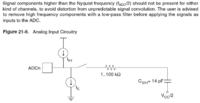neazoi
Advanced Member level 6

Hello, I have built and tested on the scope, the attached impedance bridge.
I would like to add an analogue (panel) meter to the DC-out and the Monitor-out ports, so that the instrument can be made portable.
I have a small 100uA meter which I could use. Also note that these ports output AC with a negative DC component on it.
Could I use this analogue uA meter to measure the DC and how should I connect it?
maybe I should use a voltmeter instead?
I am worrying about the measurements, I think these meters will ignore AC because they are slow and will display only the DC component of the AC waveform, is that right?
I would like to add an analogue (panel) meter to the DC-out and the Monitor-out ports, so that the instrument can be made portable.
I have a small 100uA meter which I could use. Also note that these ports output AC with a negative DC component on it.
Could I use this analogue uA meter to measure the DC and how should I connect it?
maybe I should use a voltmeter instead?
I am worrying about the measurements, I think these meters will ignore AC because they are slow and will display only the DC component of the AC waveform, is that right?


